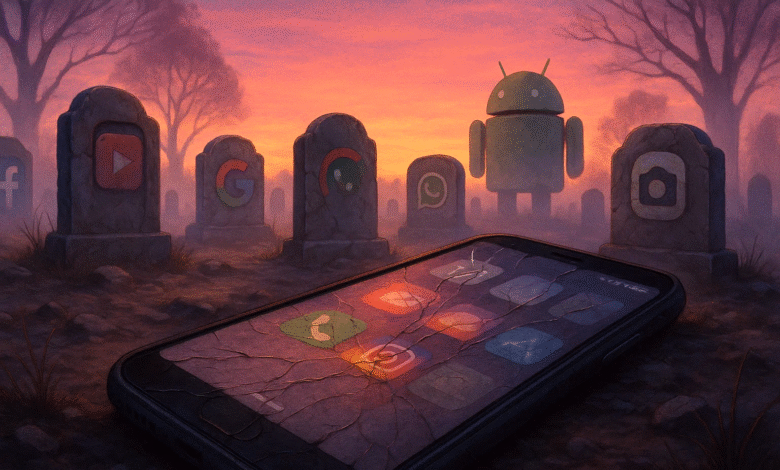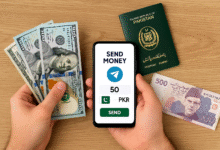
If you’ve been using Android for a while, you probably remember downloading apps that felt like game-changers. They made your phone better, faster, or just more fun to use. But then, one day, they were gone. No more updates. Pulled from the Google Play Store. Just memories.
The truth is, Android apps shut down all the time. Sometimes developers run out of money. Other times, bigger companies buy them and kill them off. And sometimes, apps just can’t keep up with new Android versions. Today, we’re looking at six brilliant Android apps that didn’t survive but left a lasting mark on how we use our phones.
Why Do Android Apps Get Discontinued?
Before we dive into specific apps, let’s talk about why mobile apps get discontinued in the first place. Understanding this helps explain why even popular apps sometimes disappear.
Common reasons apps die:
- Lack of money to keep development going
- Bought by bigger companies that change priorities
- Too expensive to update for new Android versions
- Not enough people using them
- Competition from better or free alternatives
- Technical problems that are too hard to fix
According to research on discontinued Android apps, productivity apps make up about 39% of all dead Android apps, with gaming apps close behind at 30%. That’s a lot of useful tools just vanishing.
1. Nova Launcher: The King of Customization
Nova Launcher was probably the most famous Android launcher ever made. For over 12 years, it let you customize almost everything on your home screen. Want a different grid layout? Done. Custom gestures? Easy. Icon packs? Hundreds to choose from.
The app first came out in 2012 for Android Ice Cream Sandwich and kept going strong through countless Android updates. Power users loved it because you could tweak literally everything about how your phone looked and worked.
Why it didn’t survive: In 2025, Nova Launcher officially died. The developer sold the app to a company that changed development priorities. Updates slowed down, then stopped completely. Users who depended on Nova for years suddenly had to find alternatives. The Nova Launcher subreddit, which had over 60,000 members, became a memorial page.
This is a perfect example of how even the most popular Android apps that were abandoned can disappear when ownership changes hands. Today, you can still download Nova, but it hasn’t been updated in months and might not work properly on newer Android versions.
2. Pocket: Your Reading List Just Vanished
Pocket (originally called Read It Later) was where millions of people saved articles they wanted to read later. You’d find something interesting online, save it to Pocket, and it would reformat the article into a clean, readable version without ads or distractions.
Mozilla bought Pocket back in 2017 and built it right into Firefox. For years, it seemed like Pocket was here to stay. People built massive libraries of saved articles, organizing them by tags and categories.
What went wrong: In summer 2025, Mozilla announced Pocket would shut down. Users scrambled to export their saved articles, which sometimes numbered in the thousands. The service gave people time to download their content, but there was no direct replacement that worked the same way.
Many users moved to Raindrop.io or Instapaper, but neither felt quite the same. When a read-it-later app shuts down after 18 years, it reminds us that nothing on our phones is truly permanent. This became one of the most talked-about Android apps discontinued in recent years.
3. DashClock: The Lock Screen Widget Master
Before Android had fancy lock screen customization, there was DashClock. This app let you see useful information right on your sleeping phone without unlocking it. Weather showed up as a small icon. Your email count appeared next to an envelope. You could even check battery health.
DashClock made lock screens actually useful instead of just pretty. Third-party developers created extensions that added even more functionality, turning your lock screen into an information dashboard.
Why it faded away: Android eventually added some lock screen widget features natively, but not all. Many phone manufacturers, like Samsung with One UI, built their own versions. But DashClock’s specific approach never got fully replaced.
The app was pulled from active development years ago, and while you can still find old versions floating around, they don’t work well on modern Android phones. It’s now part of the Android app graveyard of tools that were ahead of their time.
4. iA Writer: The Best Writing App That Couldn’t Stay
For writers who wanted a distraction-free writing experience on Android, iA Writer was the gold standard. It had a clean interface, great typography, and smart features that helped you focus on your words instead of formatting.
The problem? The Android version never matched the iOS version. It was always missing features and ran behind in updates. Finally, the developers explained why they were giving up.
The real reason: Google changed its app developer guidelines in ways that made iA Writer work differently than the developers wanted. Updating the app to meet the new rules would cost too much money, especially since they weren’t making enough from Android sales.
So they pulled the plug on iA Writer for Android completely. It’s still available on iOS and desktop, but Android users were left without their favorite writing tool. This shows how Google Play Store policies can sometimes force apps to shut down even when users still want them.
5. Kiwi Browser: Chrome With Superpowers
Kiwi Browser was special because it brought desktop browser extensions to Android way before anyone else. While Chrome users were stuck with the basic browser, Kiwi users could install ad blockers, dark mode tools, and productivity extensions just like on their computers.
The browser launched in 2019 and quickly became popular with power users. It was based on Chromium (the same code that powers Chrome), so it felt familiar but offered so much more.
What happened: In January 2025, the developer announced Kiwi Browser would be archived. The extension features were being integrated into Microsoft Edge Canary instead. While Edge did eventually get extension support, it wasn’t quite the same, and the mobile browser market lost one of its most innovative options.
This is another case where a small developer couldn’t keep competing with big companies like Google and Microsoft. Even though Kiwi had loyal users, maintaining a whole browser is expensive and time-consuming. It joined the list of defunct Android apps that were too good to last.
You can learn more about browser development challenges at Android Authority.
6. Syncthing: File Sync That Actually Worked
Syncthing wasn’t as famous as the other apps on this list, but it solved a real problem. It let you sync files and folders between your Android phone, computer, and other devices automatically. No cloud service needed. No monthly fees. Just direct, encrypted file syncing.
The technology behind Syncthing is still strong, but the main Android app died at the end of 2024. The maintainer said Google Play’s publishing demands made it too much work to keep updating the app, especially since development had slowed down anyway.
What this means: Fortunately, Syncthing lives on through forks – other developers picked up the code and made their own versions. But the original app that many people trusted is gone. This shows how even free, open-source apps can become abandoned Android apps when the original developer moves on.
For users who built their workflows around specific mobile apps, having them suddenly discontinued means finding alternatives and starting over. It’s frustrating but unfortunately common in the Android ecosystem.
What Happens to Discontinued Apps on Your Phone?
Here’s something interesting: even when apps get pulled from the Google Play Store, they don’t automatically disappear from your phone. If you already downloaded them, they’ll keep working until Android updates break them or they stop connecting to required servers.
These “zombie apps” can actually become security risks. They won’t get security updates, so any bugs or vulnerabilities stay unfixed. Hackers can exploit these problems. Research shows that about 5% of apps on business devices are dead apps that should be deleted.
What you should do:
- Check which apps haven’t been updated in over a year
- Delete apps that no longer work properly
- Back up any important data from dying apps
- Find modern alternatives before you’re forced to
The Bigger Picture: App Store Economics
Why do so many useful Android apps shut down while garbage apps stick around forever? The answer is usually money.
Developing apps costs real money. You need to pay developers, keep servers running, and constantly update for new Android versions. If an app isn’t making enough money through purchases, subscriptions, or ads, it eventually becomes impossible to maintain.
Big companies like Google can kill apps even when they’re profitable because they don’t fit long-term strategy. Just look at how many services are listed on “Killed by Google” – a website tracking all the products Google has discontinued over the years.
For independent developers, the situation is even harder. They might pour years into an app, build a loyal user base, and still have to shut it down because they can’t afford to keep going. It’s why the Android app graveyard keeps growing.
According to studies on discontinued mobile applications, productivity and gaming apps are most likely to get abandoned, making up nearly 70% of all defunct apps together.
Finding Alternatives When Your Favorite App Dies
When an app you depend on gets discontinued, it feels personal. You built routines around it. You learned its quirks. Now you have to start over.
Tips for moving on:
- Export your data immediately when shutdown is announced
- Research alternatives before the app stops working
- Join user communities to find what others are using
- Consider supporting paid apps to help them survive longer
- Back up important app data regularly
The good news is that the Android ecosystem is huge. For almost every dead app, there’s usually a decent alternative. It might not be exactly the same, but you’ll adapt. We always do.
Conclusion
The Android apps that didn’t survive tell an important story about how our phones work. Nova Launcher showed us what customization could be. Pocket organized our reading lists for years. DashClock made lock screens useful. iA Writer let us focus on writing. Kiwi Browser brought desktop power to mobile. And Syncthing proved you didn’t need the cloud for everything. These apps made Android better, even if they couldn’t stick around forever. When you download apps today, remember that nothing lasts forever in the mobile app world. Enjoy great apps while they’re here, export your data regularly, and be ready to adapt when your favorites eventually join the Android app graveyard. That’s just how technology works, and honestly, it makes us appreciate the good apps even more while we have them.











